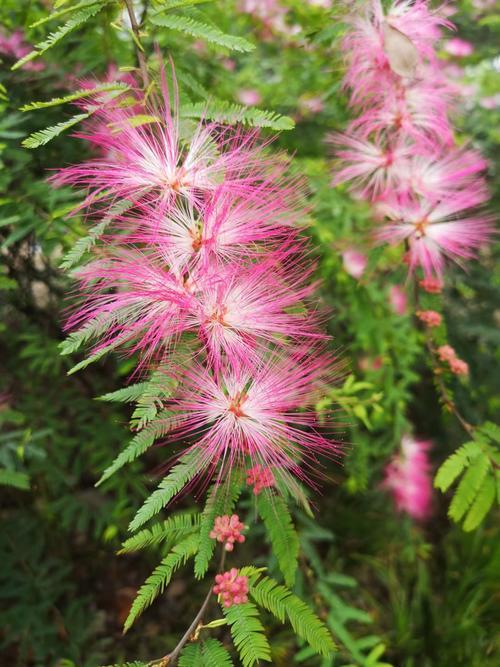Calliandra eriophylla seed
Calliandra eriophylla Fairy duster

Calliandra eriophylla (Fairy Duster): A Comprehensive Overview
Description
Calliandra eriophylla, commonly known as Fairy Duster, is a small shrub native to arid regions of the southwestern United States and Mexico. This member of the Fabaceae (pea) family grows between 1 to 3 feet tall and has a spreading habit of up to 5 feet wide. It thrives in desert landscapes, sandy washes, slopes, and mesas, with fast-draining soils and full sun exposure being ideal conditions. This evergreen plant features feathery pink to reddish-purple flowers resembling delicate dusters, blooming in spring and fall, particularly after rains.
Ecological Role
The Fairy Duster provides excellent ecological benefits. It supports pollinators like butterflies and hummingbirds, which are attracted to its vibrant blooms. The shrub also acts as a host for caterpillars, contributing to the desert food chain. Its ability to grow in arid conditions and poor soils makes it valuable for erosion control and restoring degraded landscapes.
Uses and Benefits
- Ornamental Landscaping: Due to its vibrant flowers and low water requirements, Fairy Duster is widely used in xeriscaping and desert-themed gardens. It can be planted as a border, ground cover, or in containers, adding visual appeal to drought-tolerant landscapes.
- Low Maintenance: The plant is ideal for regions with minimal rainfall, needing supplemental watering only during establishment or extremely dry periods. It is also cold-tolerant down to 25°F.
- Wildlife Habitat: The flowers and foliage provide food and shelter for native wildlife, supporting biodiversity.
Care Tips
- Watering: Requires minimal watering once established; overwatering can lead to root rot.
- Pruning: Regular pruning after the blooming season enhances its health and encourages vibrant flowering.
- Soil and Sunlight: Prefers sandy or decomposed granite soils with a pH between 6.0 and 8.0, under full sun.
Conclusion
Calliandra eriophylla is a versatile and attractive shrub well-suited for arid environments. Its ecological and ornamental value, coupled with low maintenance needs, makes it a popular choice among gardeners and conservationists alike.
